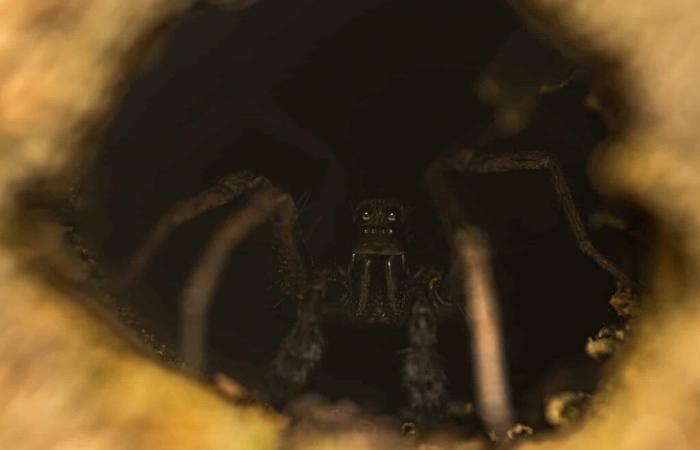According to traditional phylogeny, the greatest arachnid of all time is probably a scorpion, and not a spider. However, relatively recent work suggests that we should review the evolutionary relationships of the Chélicères. In this case, the biggest arachnid who has ever lived was probably much larger than you.
Arachnids are a class of chélicère arthropods. It is the group which includes, among other things, spiders, scorpions, mites and opilions. However, the question is still open.
Officially, the Chélicères are indeed subdivided into smaller groups, the arachnids being a group, while the horseshoe crabs (Limules, Order XIPHOSURA) and sea scorpions (EURYPTERIDA order) form two others. This is traditionally accepted phylogeny. However, a published article suggests that these last two groups could actually be nestled in that of arachnids.
In detail, this new phylogeny, based on molecular analysis, underlines that the groups of terrestrial cherries (spiders and scorpions) preceded the marine groups (sea and sea scorpions). However, despite the fact that this assertion is supported by genetic evidence, it is currently incompatible with the fossil archives.
The greatest living and extinguished arachnid
According to the traditional vision of the genealogical shaft of arachnids (therefore ignoring the Limules and the Sea Scorpions), the largest living arachnid is a spider.
-There are two contenders here. The Mygale Goliath (Theraphosa blondi) is considered most massive. Together, cephalothorax and opisthosome (the body without legs) can measure up to twelve centimeters. Then add the legs, and you get a Total wingspan of about 28 cm For a weight of about 170 grams on the scale.
However, if you should only base yourself on the waist, then the largest spider could be Heteropoda maximaa species of the sparassidae family. Endemic to the province of Khammouane in Laos, it has a Split legs about 30 cm. Despite its size, this spider was only discovered in 2001.
When we dive into the fossil archives, we note, on the other hand, that the greatest arachnid ever discovered, still according to accepted phylogeny, was probably not a spider, but a scorpion. English brontososcorpiowho lived at the Devonian Silurian era (between 350 million and 450 million years ago), could indeed measure nearly a meter long. However, it should be noted that the only example of this known species has been described from a single free finger, that of its right pedipalpe (one of the two blades of its right clamp, visible below).
Sea scorpions larger than humans
If we now take into account sea scorpions and horseshoe crabs, then the largest living pearl is no longer a spider, but rather a limule. According to a study published in 2017 in the Journal of Asia-Pacific Biodiversity, the largest living species, Tachypleus tridentatuscan indeed reach a length of Almost 80 cm.
If we now take into account all the fossil archives, the title would probably return to a member of the sea scorpions of the Euryprides group, which is now missing. Indeed, fossils suggest that many of these former marine predators would compete in size with humans. The greatest species of this group was Jaekelopterus Rhenaniaea species discovered in 2007 whose claws measured up to 46 cm long. From these claws, the researchers estimated that his body was measuring about 2.5 m long.








